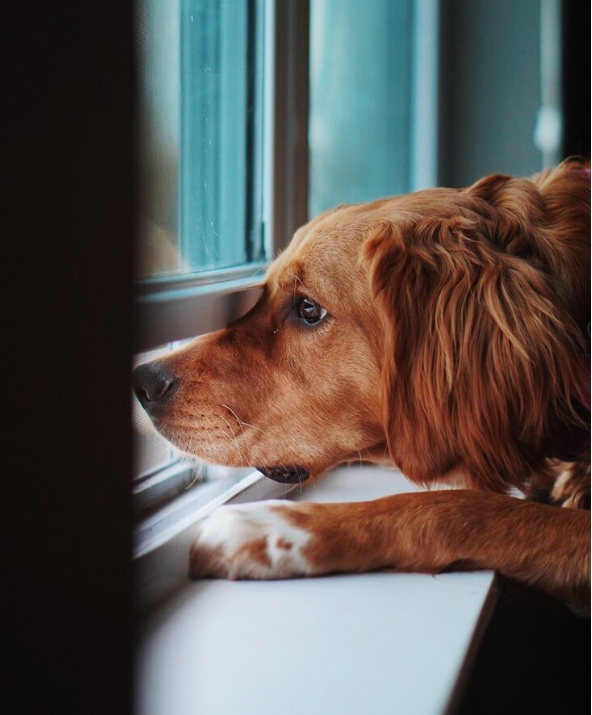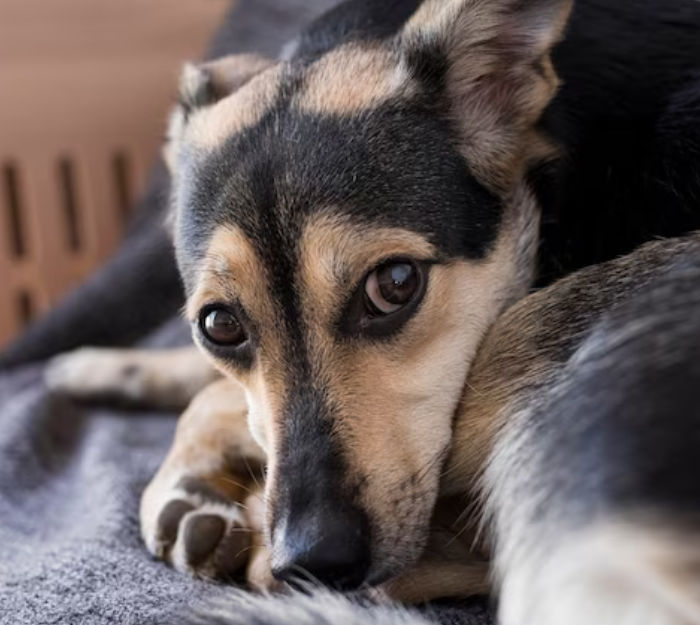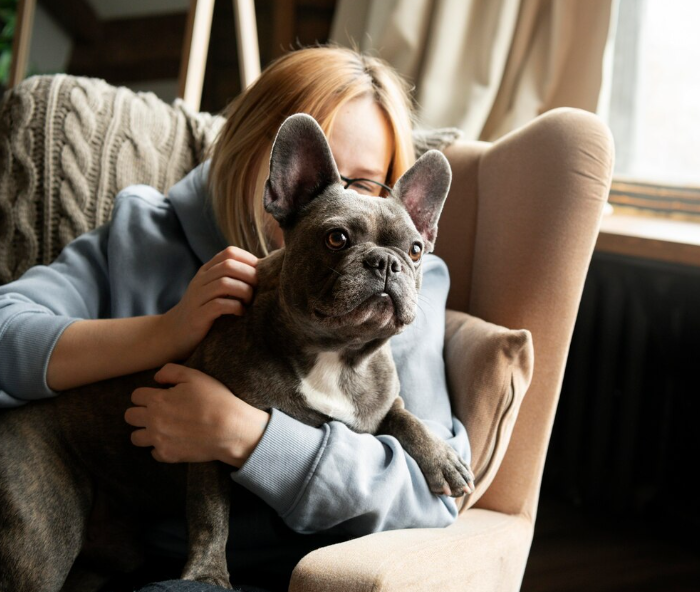2023-12-04
Welcoming a furry friend into their lives can be one of the most joyful experiences for all animal lovers worldwide. Dogs become inseparable members of our family, giving us their unconditional love and loyalty. We respect and appreciate our paw friends with all their strengths and weaknesses, accepting their uniqueness.
However, accepting some behaviors that may seem quirky from our perspective is one thing while recognizing behavioral issues and doing nothing to address them is another thing.
While being clingy, showing a continuous desire to accompany us everywhere we go, and whining when left alone, may be perceived as a “sweet” behavior by some owners, it can also be a sign of separation anxiety. Separation anxiety can be displayed in various destructive behaviors such as chewing on shoes, pieces of furniture, or other items at home, excessive barking and whining, house soiling, and even attempts to escape.
Separation anxiety can become a serious behavioral issue, which is why it should be treated promptly. Today, we will give you advice on how to recognize separation anxiety in your paw friend, what the cause of it may be, and how to address it properly.

Separation anxiety is a behavioral problem that occurs when a dog becomes overly attached to their owner and becomes distressed when left alone. Separation anxiety can be caused by various factors, including changes in the routine, past traumatizing experiences, lack of socialization and the presence of stressors in the surroundings, moving into a new home, and abrupt absence of the owner or another beloved family member.
Genetics also play a role, as some dog breeds, despite the uniqueness of their representatives, are believed to be more prone to separation anxiety than others. For instance, the Labrador Retriever, the German Shepherd, the Chihuahua, the Cavalier King Charles Spaniel, and the Cocker Spaniel are among the breeds that are predisposed to developing separation anxiety.
As you can see, it is not the size of the breed, which is the determining factor in this case. Dog breeds of all sizes can be affected by this problem.

Dogs with separation anxiety often use excessive vocalization such as barking, whining, or howling as a way to communicate their distress. These vocalizations can be continuous and may persist throughout the time the owner is away.
Living in an apartment building with a very vocal paw friend suffering from separation anxiety may not present you in the best possible light before your neighbors. In order to avoid any conflicts and help your dog maintain their general well-being, it is essential that you address this behavior before it has turned into a bad habit.
As mentioned above, your furry friend may also display destructive behaviors like chewing on household items or furniture as a type of coping mechanism for separation anxiety. The act of chewing can help alleviate their stress and anxiety.
However, it can not only result in damage to your belongings but also pose a potential health risk to the health and safety of your canine, if they ingest harmful objects such as toxic or sharp items.
Providing your beloved paw family member with appropriate chew toys and gradually redirecting their attention to these toys when alone can mitigate the symptoms of destructive behavior.
House soiling is distressing for both the dog and the owner. It may occur even if the dog has already been fully housebroken, as it is triggered by anxiety and is not caused by a lack of understanding of appropriate elimination.
It is essential for your dog’s well-being and improving their coping mechanism to be patient with them during this process.
We would highly recommend that you focus on positive reinforcement and encourage your paw friend to show the wanted behaviors, instead of punishing them for exhibiting unwanted ones. Not to mention, that punishment will only worsen your dog’s anxiety and lead to regression in their training.
When a dog feels anxious and abandoned, their instinct may drive them to escape from home in search of their owner. This behavior poses risks to their safety, as they may get injured or lost. Ensuring that your home and garden/backyard are secure and escape-proof is crucial for your dog’s safety.
Dogs with separation anxiety may display restlessness by pacing around the house or in confined spaces. This behavior is a manifestation of their anxiety and indicates a high level of stress. By observing this behavior you may be able to understand the severity of their anxiety and the need for timely intervention.

To alleviate your dog's separation anxiety, a combination of environmental enrichment, training, and gradual desensitization is necessary.
It is essential to approach this process with patience, empathy, and consistency, and never forget to show your love and care for your paw friend. Remember that harsh methods will only worsen the problem, and should be avoided.
Providing your dog with a safe and comfortable space can effectively help mitigate the symptoms of anxiety when you are not around. Choose a quiet area at home to place their bedding, favorite toys, and items such as plush blankets and T-shirts, that have familiar scents on them.
That area should have a good view of the other parts of the house/apartments, and not be crowded or too isolated. Spend time together in this space and reward your doggo with treats and praise when they are calm and happy. This will help them associate the area with positive experiences, increasing its calming effect during your absence.
Simply put, this means not making a big deal of the times of the day when you leave home and return. Just keep these events low-key.
We know how difficult it can be to restrain yourself from enthusiastically talking to your dog, hugging and petting them after a long day away from them. However, it is important for your paw friend to understand that events such as “leaving home” and “returning” are regular parts of your routine. They do not mean that you are abandoning your paw friend.
You may want to avoid long goodbyes or excessive excitement when you return home. Instead, you can try ignoring your dog for a few minutes after returning, allowing them to calm down. Once they settle, you can express your love and affection for them. This helps them learn that your absence is temporary and there is nothing to be anxious about.
Interactive toys and food puzzles can be valuable tools to keep your dog mentally and physically stimulated during your absence. These toys challenge their minds and provide a positive distraction from their anxiety. Load the toys with treats or their daily food to keep them engaged while you're away.
If your dog is highly energetic and requires regular physical stimulation, you may consider providing them with ball launchers or outdoor tug toys, so they can remain physically active in your absence and do not get bored.
Start by leaving your dog alone for just a few minutes or even seconds, depending on how severe the symptoms of separation anxiety are. This could mean stepping outside and returning immediately.
If your paw friend remains calm, reward them immediately by using their favorite treats. You can of course use toys, pets, and praise too, depending on what motivates your paw friend the most. If your dog starts whining or showing symptoms of anxiety, you should decrease the duration of your absence, wait for them to calm down, and try again in a few minutes when they are relaxed.
Gradually extend the duration of your absences as your dog becomes more comfortable. This process of gradually exposing the dog to stimuli, by starting at a low level and increasing their intensity is known as desensitization. It helps your dog understand that you will return and that being alone is safe.
Dogs can quickly pick up on cues that are related to your departure, i.e. preparing the keys, a phone, or putting your shoes on. If you want to prevent your dog from associating these cues with a negative experience (your absence), you should engage in the same actions during the day (putting your shoes on, grabbing your keys) without actually leaving. Over time, this will help your dog stop associating these cues with your actual departure, or at least be less sensitive to it.
Leaving the radio or TV on, and playing calming music can help soothe your dog's anxiety. Some dogs respond well to audiobooks or recordings of human voices, as these help create a sense of presence and comfort.
The more intensively you encourage your dog to be calm and relaxed and reward them for showing the wanted behaviors, the more motivated they will be to continue doing so.
You should use treats of a high value to reinforce behaviors or tasks that your paw friend has the most difficulties with. Treats of a high value are given during the training process only and usually include pieces of chicken, turkey, beef, and string cheese.
Praising your beloved paw companion and petting them will also encourage them to exhibit wanted behaviors. The more frequently you expose your dog to being home alone, the more accustomed they will be to your absence. Addressing separation anxiety in dogs requires patience, consistency, and regular training.
Understanding the symptoms of separation anxiety is the first step toward creating a harmonious and loving relationship with your paw companion. Knowing your dog as an individual will help you implement the tips provided above in the best possible way, so they suit their needs and personality.
Remember that each dog is unique and learns at their own pace. Be prepared to adapt your approach to your dog’s responses. Investing time and putting effort will help you achieve positive results, leading to a happier and more balanced life for both you and your beloved paw friend.